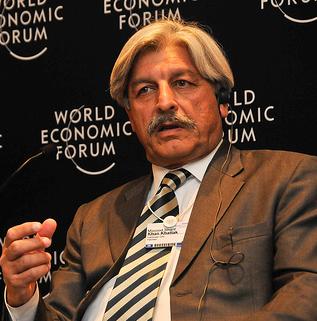The Westminster model of parliamentary democracy has been a dismal failure in Pakistan because of the frequent martial laws and the blatant manipulation of the Constitution. For Pakistan to become a viable state it will have to restructure its political system. Devolution of effective political power and greater autonomy to the federating units will have to be the two fundamental ingredients of any future political structure. Over the years, the unchallenged Centre has become increasingly weak and incoherent.
Pakistani society is going to press for more political liberties. Pakistan needs to foresee the political dictates of coming times. Initiating dynamic changes is always better than becoming victims of the effects of changes that are circumstantial.
The recent upsurge of civil society and of the upcoming middle class is extremely noticeable. This growing segment of Pakistan’s population is more educated and dislikes excessive state control. For lasting harmony the common man will have to be taken on board and made an effective stakeholder in the destiny of Pakistan.
To ensure a strong and vibrant Pakistan more provinces will have to be created. It is now highly dangerous to continue with just four big provinces with one having 62 percent of the country’s population and another as big as covering 48 percent of the country’s territory.
There are two alternatives to the current Westminster parliamentary model based on the heavily amended 1973 Constitution: a presidential system for Pakistan on the US model, or one more effort to make the original 1973 Constitution successful. Inertia would mean an invitation to a catastrophic disaster for Pakistan.
Let us briefly recapitulate our political history. From Shaheed Liaquat Ali Khan (1947-51) to the time Iskander Mirza took over as President in 1956 there were seven prime ministers and three governors general (akin to a president). On Oct 7, 1958, Mirza imposed martial law, appointing the then army chief Gen Ayub Khan as the chief martial law administrator. Three weeks later, Ayub Khan dislodged Iskander Mirza and took political power, setting precedence for his successors. Ayub Khan ruled as President till March 25, 1969, when he handed over, under duress, to the then army chief Gen Yahya Khan who, in turn, ruled as the president till the country disintegrated in 1971. Shaheed Zulfikar Ali Bhutto’s vibrant, dynamic and charismatic leadership resuscitated Pakistan and the Westminster model and gave the country the unanimous 1973 Constitution, after which he became Pakistan’s first elected prime minister. On July 5, 1977, Gen Zia-ul-Haq committed treason by removing the Constitutional government of Shaheed Z A Bhutto and later orchestrated the judicial murder of Shaheed Z A Bhutto in 1979. Pakistan plunged into another eleven years of political darkness. Shaheed Mohtarma Benazir Bhutto revived the Westminster model, through years of struggle, in 1988. After the elections in 1988, 1990, 1993 and 1997 the country nearly came to achieve, by default, a two-party system by virtue of the political statures of Shaheed Mohtarma Benazir Bhutto (PPP) and Mian Nawaz Sharif (PML-N). Then came Oct 12, 1999, when Gen Musharraf unceremoniously arrested Prime Minister Mian Nawaz Sharif despite his 2/3rd majority in Parliament. From Oct 12, 1999, up to March 31, 2008, the Westminster model was worse than being a mistress to Gen Musharraf. The Constitution was derided with unspeakable contempt. On March 31, 2008, Syed Yousaf Raza Gilani took oath as the 25th prime minister of Pakistan and Musharraf after hanging on disgracefully by the skin of his teeth resigned on Aug 18, 2008, making way for Asif Ali Zardari to become President.
The political history of Pakistan shows that two governors general and five politically strong presidents have ruled the country for 43 years of its 61 years of existence. Compared to this Pakistan has had 25 prime ministers in all. Between Aug 14, 1947, to Oct 7, 1958, Pakistan saw 7 prime ministers working under governors general. Four prime ministers were military appointed running mock parliamentary dispensations under two different army chiefs–cum-presidents. There was one prime minister in 1971 for only 13 days! Five prime ministers have been caretakers. In the real sense Pakistan, in the past, has had only four effective prime ministers, i.e., Liaquat Ali Khan (appointed by Quaid-e-Azam), Zulfikar Ali Bhutto (first elected), Mohtarma Benazir Bhutto (twice elected) and Mian Nawaz Sharif (twice elected). It is obvious that the Westminster model has had a very rough deal.
Therefore Pakistan should start planning a political system that is uniquely its own. Can the present Westminster model be extensively modified to suit Pakistan? Could a Presidential system be eventually crafted for Pakistan’s peculiar political requirements with the president being directly elected? Would it not be beneficial to have smaller provinces that are governed by directly elected governors and their own parliaments comprising of the provincial assemblies and provincial senate with senators, at all levsels, being directly elected? Is it not time for complete autonomy and effective devolution of political power to be given to the federating units? Think tanks need to consider these and many more such questions to emerge with refined solutions.
http://www.thenews.com.pk/editorial_detail.asp?id=158725

3 Replies to “For a new Pakistan”